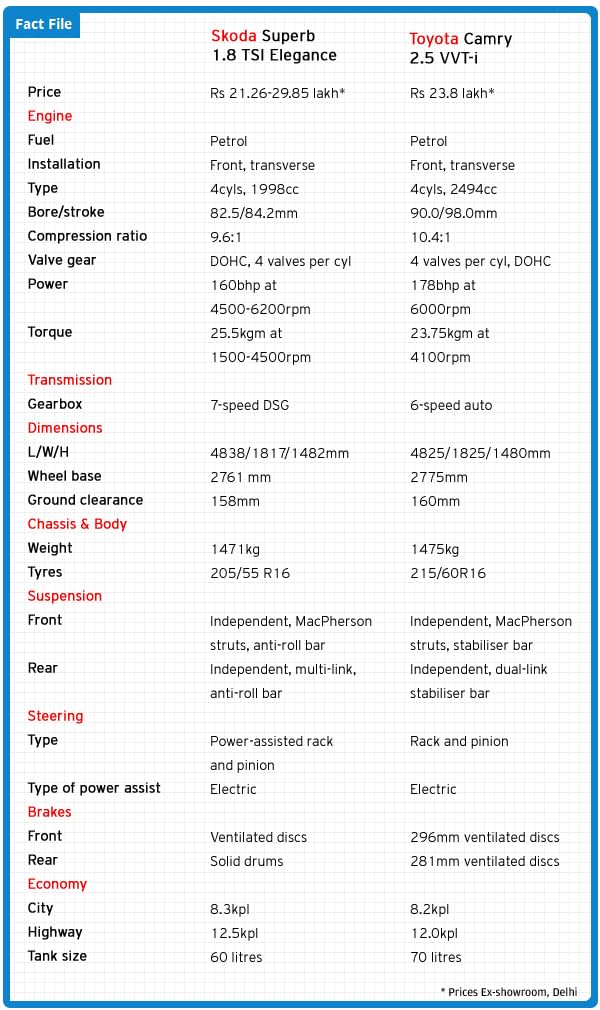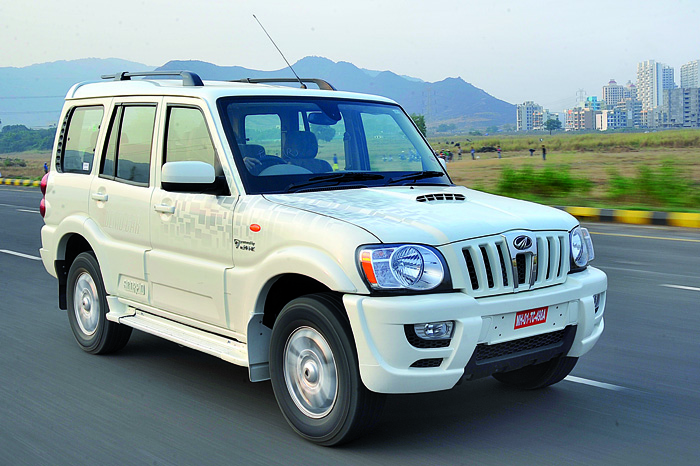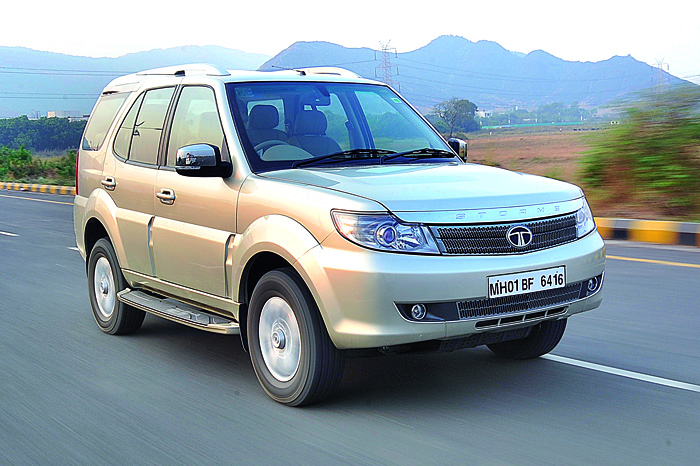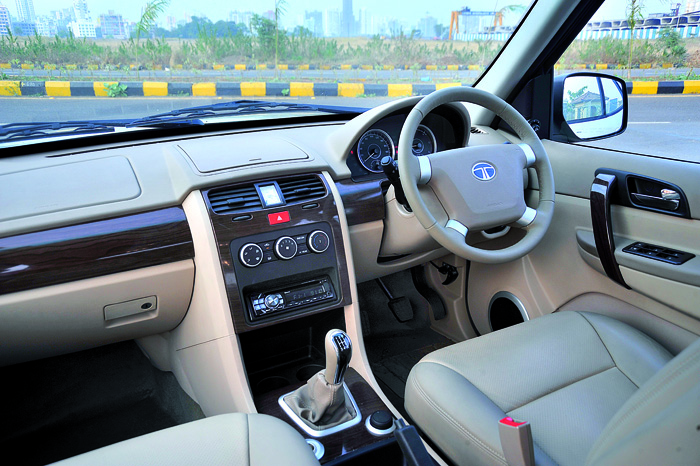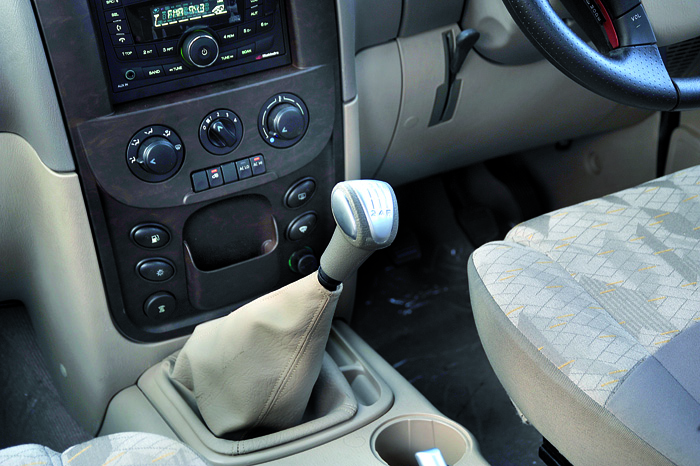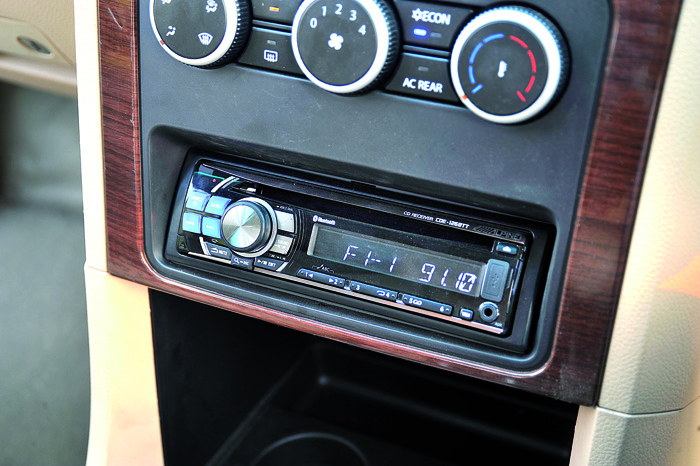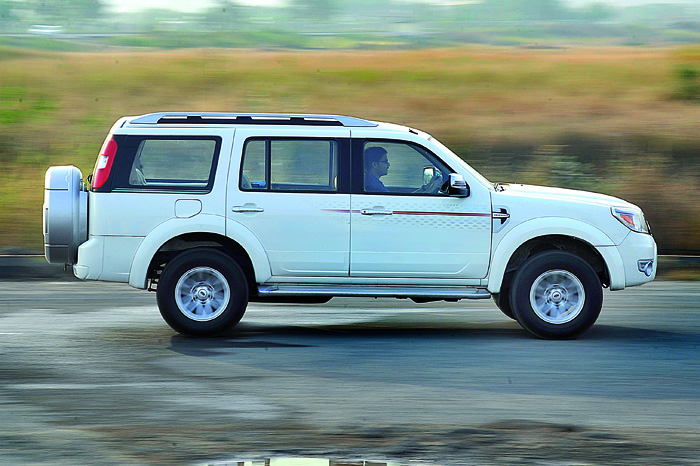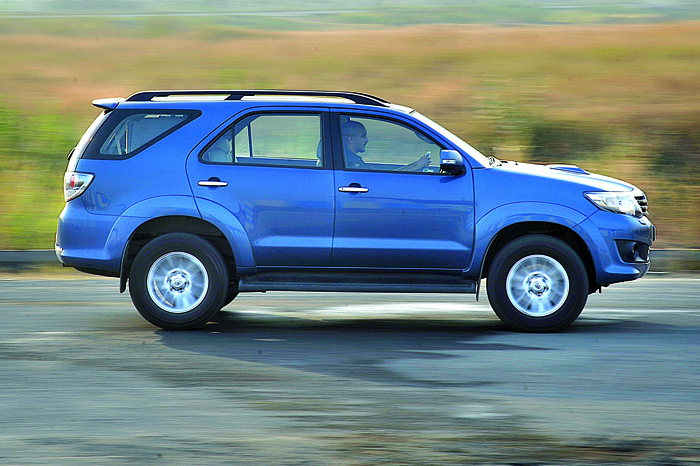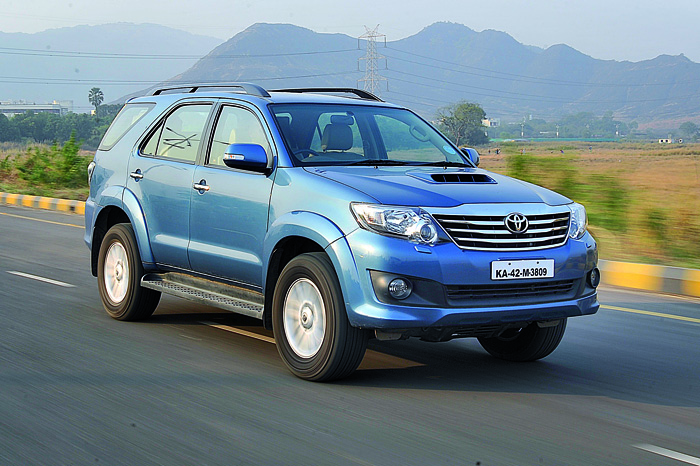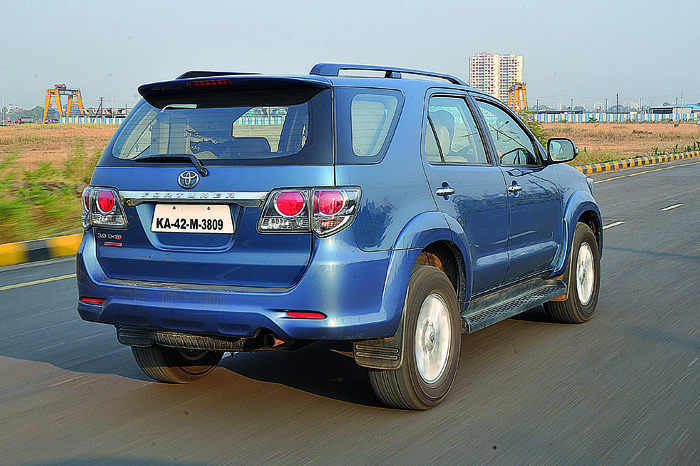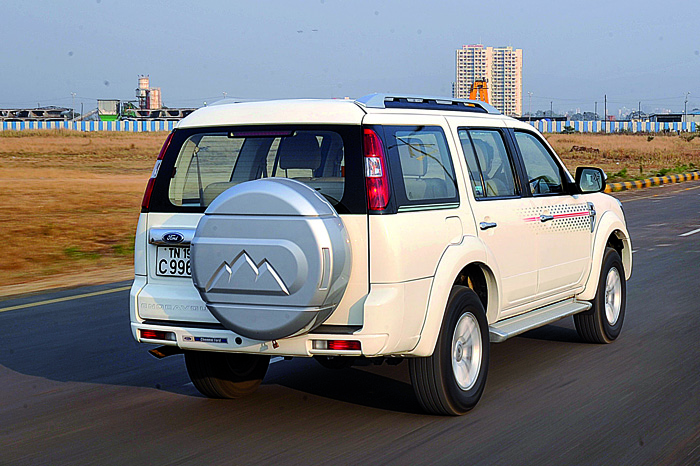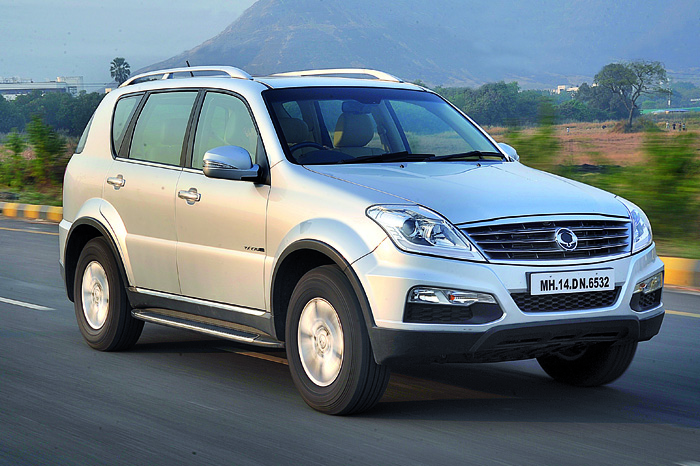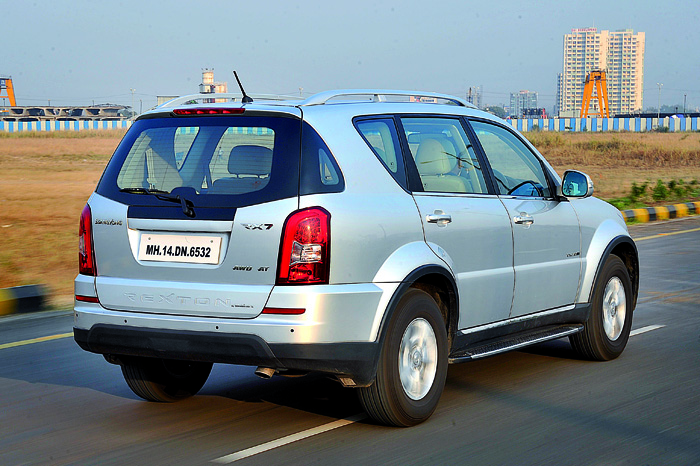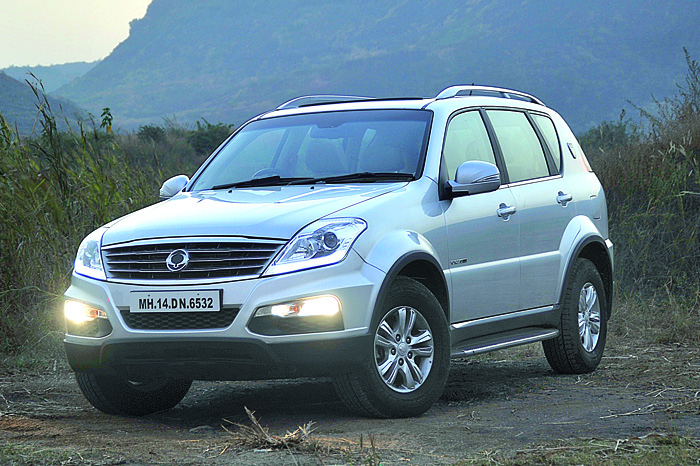One comes from Japan, the other from Germany. Each had a different engineering philosophy and development process. But Toyota’s Camry and Skoda’s Superb have quite a lot in common. These massive luxury cars look to deliver acres and acres of space, lots of comfort and plenty of performance and refinement, all neatly packaged and wrapped up at the best price possible.
Although, with fuel prices rising by the day, it might not seem like the wisest decision to buy a petrol luxury car, there are actually good reasons to stick to good old gasoline. Petrols makes good sense for buyers who don’t rack up the miles, they are cheaper to buy than their diesel cousins and are, of course, much more refined.
The brief for these automatic gearbox-equipped cars is simple — they should look expensive, feel expensive, keep their occupants comfortable, and also keep owners happy when they do the odd bit of driving themselves. So which one should you spend your money on?
Performance
The Toyota Camry is powered by a conventional, 2494cc, naturally aspirated petrol, developing 178bhp and 23.75kgm of power and torque. This engine’s main highlights are its linear power delivery and its driveability, which you immediately notice. Prod the throttle and the Camry leaps forward. The motor is super-responsive and has a solid tug from low engine speeds, making it ideal for city driving. All you have to do, even if you are in a high gear, is put your foot down and the Camry scoots forward to make up that gap in traffic. That said, the six-speed automatic gearbox is a bit slow and hesitant, something that’s especially true when you want that instant downshift. This can be frustrating while overtaking. Still, the Camry is very capable on the highway and the motor does not mind spinning fast either. The Camry does fall some way back in terms of engine refinement, however. Some amount of engine noise filters into the cabin when you rev the engine beyond 4000rpm and pushing the engine hard can cause it to get quite buzzy. It is reasonably quick for such a large car, though. Zero to 100kph is executed in a quick 9.73 seconds and 140kph comes up in an impressive 18.45 seconds.
On its own, the Camry’s engine feels very accomplished, and it is. But that’s only until you drive the Superb. The Skoda may have a smaller motor, and the power output is lower, but it has more pulling power or torque and a better gearbox, and so is the quicker of the two. That is a tribute to the brilliant 1.8-litre direct-injection turbo motor which still remains the benchmark among petrols. The big Skoda saloon sprints to 100kph in 9.1 seconds, aided in no small way by the seven-speed gearbox, which makes maximum use of the 25.5kgm of torque that peaks at a super-low 1500rpm. It’s the direct-injection system that allows such a wide band of pulling power. The Camry has to rev to about 4000rpm to make its max pulling power, by which time the Superb is already a long way down the road. The only fly in the ointment is the initial delay in response when you floor the throttle pedal. It’s an annoying trait of the DSG gearbox, but once the transmission kicks in, the quick gearshifts whisk you to astonishing speeds in no time. Using the transmission in manual mode via the steering-mounted paddles keeps you in the right gear at the right time to get around the mild delay in the responses of the turbo.
Ride and handling
The Camry’s ride comfort is unparalleled. Small bumps are absorbed perfectly and even big bumps hardly affect things. Because of this refusal to get knocked off line, the Camry is almost as good as the Superb in a straight line. But the Toyota’s high-speed floatiness is trumped by the Skoda’s surefootedness at high speeds. The handling too takes a hit. The light steering is vague, there is considerable body roll and overall grip levels could have been better. The Camry does well when driven in a relaxed manner, but those looking at upping the pace even a bit will be disappointed.
The Superb is set up for Europe’s high-speed roads and numerous corners, which means it is noticeably more stable than the designed-for-America Camry. Aided by its brilliant electric steering and superb body control, it’s no surprise that it’s lightning-quick through corners. However, what the stiff setup does is make you aware of the presence of most bumps at low speeds. But pick up the pace and the Skoda displays an unreal talent for swallowing up bumps at high speed. There is considerably more road noise in the Superb however.
Interiors
If the old Camry was known for its comfy interiors, and this one picks the standard up again. It feels like a comfortable living room, with its convincing wood finish and the simply laid-out, easy-to-use controls are a big step forward as well. You’ll love the perfectly cushioned, powered front seats, the deep-pile carpet is a very comfortable place to put your feet, and the well-chosen colours have a calming effect too.
In terms of quality, the new Camry has taken a huge leap forward too. The ordinary interior of the old car has been replaced with a much more luxurious array of materials and the plastics have a richer feel to them too. In addition, the shapely dashboard is uncluttered and the combination of beige, black and faux wood looks classy. Travelling in the Camry is like getting a massage – soothing and peaceful. And it is practical too. You get keyless go, there are plenty of storage bins, and the Toyota has a huge glovebox as well.
The materials in the Superb’s cabin, however, are even better. We just love the high-quality chrome bits splashed all over the dashboard, every surface you touch feels rich and the cabin has that all-important sense of occasion that’s so difficult to engineer.
The hooded dials look brilliant, the steering wheel has a nice chunky feel to it and that touch-screen audio and parking system are a treat to use. If we could find fault with the cabin, it’s with the front seats, which aren’t as wide as the Toyota’s.
If you’re going to spend most of your time in the rear seat, it is the Camry that comes out on top. Yes, the Superb has more legroom, but the rear seat of the Toyota is so much better, it actually comes as something of a shock. The back seat easily rivals the best sofas, there’s massive shoulder and back support, and the space is more than adequate for even those with long legs. However, to provide maximum comfort to the two rear passengers, room for a third passenger is compromised. Still, the Camry is much wider than the Superb at the rear. A thoughtful touch is the Mercedes S-class-like ‘remote’ adjustment for the front passenger seat from the rear. The Superb has acres of legroom and feels more airy and open. Even seven-footers could stretch out in this back seat comfortably and, though they’d find the headroom a bit confined, this is not something you can say about many cars. Like most Skodas, however, the seat cushioning on the backrest is a tad too hard.
Clever engineering in the Superb is evident when you open the cavernous boot. A switch allows you to open it either like a hatch or like the boot of a saloon, and luggage space is just massive. What’s more, you can even split and fold the rear seats, which results in estate-car-like space.
The Camry comes with all the essentials, like fully powered front seats, dual-zone digital climate control and a two-DIN touchscreen to access all your infotainment needs. Other gizmos like auto HID headlamps and rain-sensing wipers are also standard, but there’s no sunroof. Where it falls short is in terms of safety features. It comes with only two airbags, doesn’t have stability control or ESP and lacks even traction control.
The Superb, on the other hand, comes with array of safety features like six airbags, ESP and ABS. You get lots of standard kit too and the top Elegance variant comes with a touchscreen control interface, Bluetooth connectivity, cruise control, a sunroof and powered front seats.
Will they break the bank?
The new Camry, with automatic transmission, comes in only one variant priced at Rs 23.80 lakh. It also has the advantage of a hefty 3 year/100,000km warranty. The car gets all the essential features and comes with automatic climate control, powered front seats, a touchscreen display, powered mirrors, two airbags and steering-mounted controls. The main advantage the Toyota has over the Skoda is in terms of after-sales and reliability. The peace of mind that the Toyota ownership experience offers is second to none.
The Superb comes in four variants and prices start at Rs 18.0 lakh for the base Ambition petrol, climbing all the way to Rs 24.37 lakh for the diesel Elegance. The Ambition comes with all the essential features, getting powered front seats, traction control, leather interiors, remote locking, dual-zone climate control, rear parking sensors, 16-inch wheels and eight airbags. What you miss is Bluetooth connectivity, touchscreen audio, paddle-shifters, Electronic Stability Control, cruise control, keyless go and a sunroof that are standard on the Elegance variant we have tested here. The petrol Elegance manual is priced at Rs 18.65 lakh while the automatic is priced at Rs 20.21 lakh. It also gets a comprehensive 2 year/unlimited km warranty as standard.
Verdict
Plush, soft and comfortable, the new Camry is everything a luxury car should be. The back seat is perfectly cushioned and supportive, the low-speed ride is incredibly comfortable and the interior quality is so much better than the earlier car, this car feels like a mini-Lexus. Then it is smooth and relaxing to drive and the car feels more than adequately powerful. The biggest plus, however, comes from the fact that the Camry is a Toyota, and that means bulletproof reliability and top-class after-sales service.
The Superb, difficult as it is to believe, gives you even more, feeling for all the world like a barely scaled down version of a full-fledged limo. Finer detailing on the inside, better-quality materials and a more up-market design make its cabin an even nicer place to spend time. There’s more space on the inside and the Skoda is better equipped too. The direct-injection turbo-petrol motor is more powerful and more refined, its twin-clutch gearbox is nicer to use and the Superb is much more fun to drive. Overall, the Skoda is the better car, and to top it off, it’s cheaper by Rs 4 lakh, which somewhat compensates for the fact that the Skoda is nowhere near as reliable or well supported as the Toyota.
